Vietnamese traditional costumes reflect the country's rich culture and history, embodying the spirit of unity and identity while showcasing vibrant colors and intricate designs.
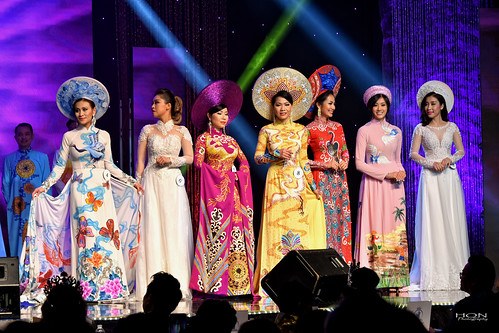
Photo: Internet
Vietnamese traditional costumes are more than just clothing; they are a vivid expression of the nation's culture and identity. Rooted in history, these garments reflect the rich tapestry of Vietnamese life, blending artistry, symbolism, and a deep connection to heritage. Each costume tells a story, often linked to specific regions, festivals, or historical events, showcasing the craftsmanship and creativity of local artisans.
From the intricate patterns to the vibrant colors, these outfits capture the essence of Vietnamese spirit and pride. In this exploration, Vietnam Travel Group will delve into the top Vietnamese traditional costumes that embody the national spirit, celebrating their significance and the cultural narratives they represent.
1. Ao Dai (Vietnamese Traditional Dress)
Undoubtedly, the Ao Dai is widely recognized both in Vietnam and globally as the most iconic Vietnamese traditional costumes of the country. While many Vietnamese people have embraced Western clothing, this traditional dress continues to symbolize the elegance of Vietnamese culture and is still a favored choice for formal events like weddings and New Year celebrations.
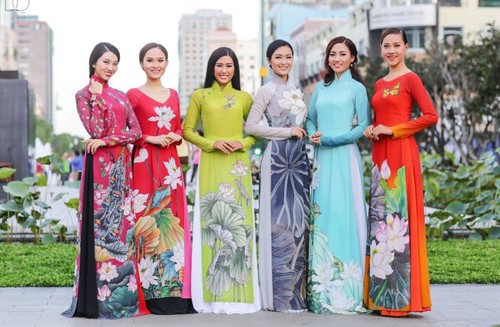
Photo: Internet
The Ao Dai has been embraced as the national costume for the modern era, evolving through various styles over the decades. Today, it is celebrated as a simple, colorful, and graceful representation of Vietnamese identity. The contemporary Ao Dai features long trousers and a two-flap design, where the dress splits into front and back flaps from the waist down.
2. Non La (Conical Palm-Leaf Hat)
The Non La, or Vietnamese conical palm-leaf hat, is an integral part of traditional female attire in Vietnam. As you travel through the country, you'll often see local women wearing this distinctive hat while strolling along the streets. Particularly practical in Vietnam's tropical climate, the Non La serves as a vital accessory for farmers, providing protection from both rain and sun in rural areas.
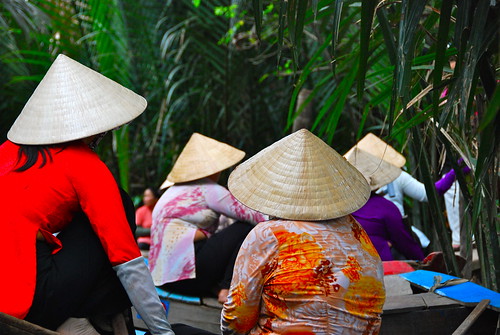
Photo: Internet
Vietnam Travel Group also offers day trips to traditional conical hat-making villages, allowing tourists to witness the hat-making process firsthand and even craft their own unique designs. This experience serves as an excellent opportunity for visitors to take home a meaningful souvenir, showcasing a traditional symbol of Vietnam that transcends age, gender, and ethnicity.
3. Ao Tu Than (Four-flapped Dress)
Before the Ao Dai became popular, Vietnamese women wore the Ao Tu Than, which is regarded as one of the country's most enduring cultural relics. The origins of the Ao Tu Than remain uncertain, but its depiction can be found on the ancient Trong Dong (copper drum) from thousands of years ago.
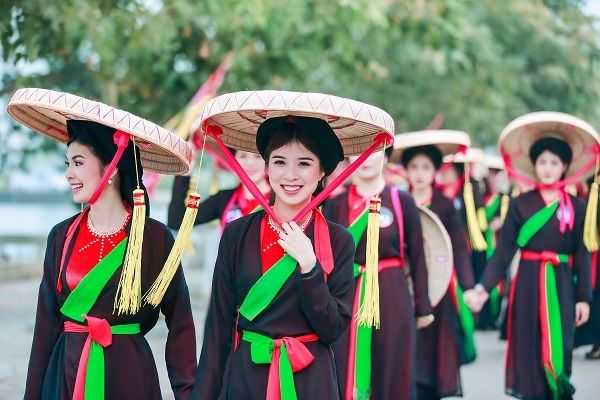
Photo: Internet
Traditionally, it was dyed using natural materials such as dye-yam, tropical-almond leaves, and mud. Although the Ao Tu Than is not commonly worn in everyday life today, it still makes appearances at various northern festivals and events, showcasing vibrant color gradients between the bodice, skirt, and tunic.
4. Ao Ba Ba (The Shirt of Madam Ba)
While the Ao Dai is recognized as the most iconic Vietnamese traditional costumes, the people of the Mekong Delta have their own traditional attire known as the Ao Ba Ba. This garment is widely popular in the southwestern countryside, where you’ll often see locals wearing it during their daily activities. The Ao Ba Ba reflects the region's unique culture and lifestyle, distinguishing it from the more formal Ao Dai.
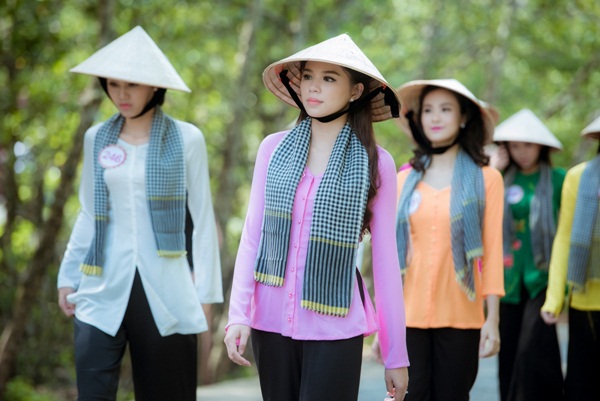
Photo: Internet
During your visit to the Mekong Delta with Vietnam Travel Group, you'll be captivated by the sight of Ao Ba Ba shimmering beneath the lush coconut groves, as locals row boats along the rivers, traverse monkey bamboo bridges, or navigate bustling floating markets. These vibrant scenes beautifully showcase the region's culture and daily life.
5. Traditional costumes of Ede ethnic group
The Vietnamese traditional costumes worn by Ede women consists of a gown wrapped around the waist, covering the lower half of the body. The shirt is designed as a fitted pullover, with a slit that runs from the left shoulder to the right. This design enhances the wearer's modesty while creating a discreet and elegant silhouette.
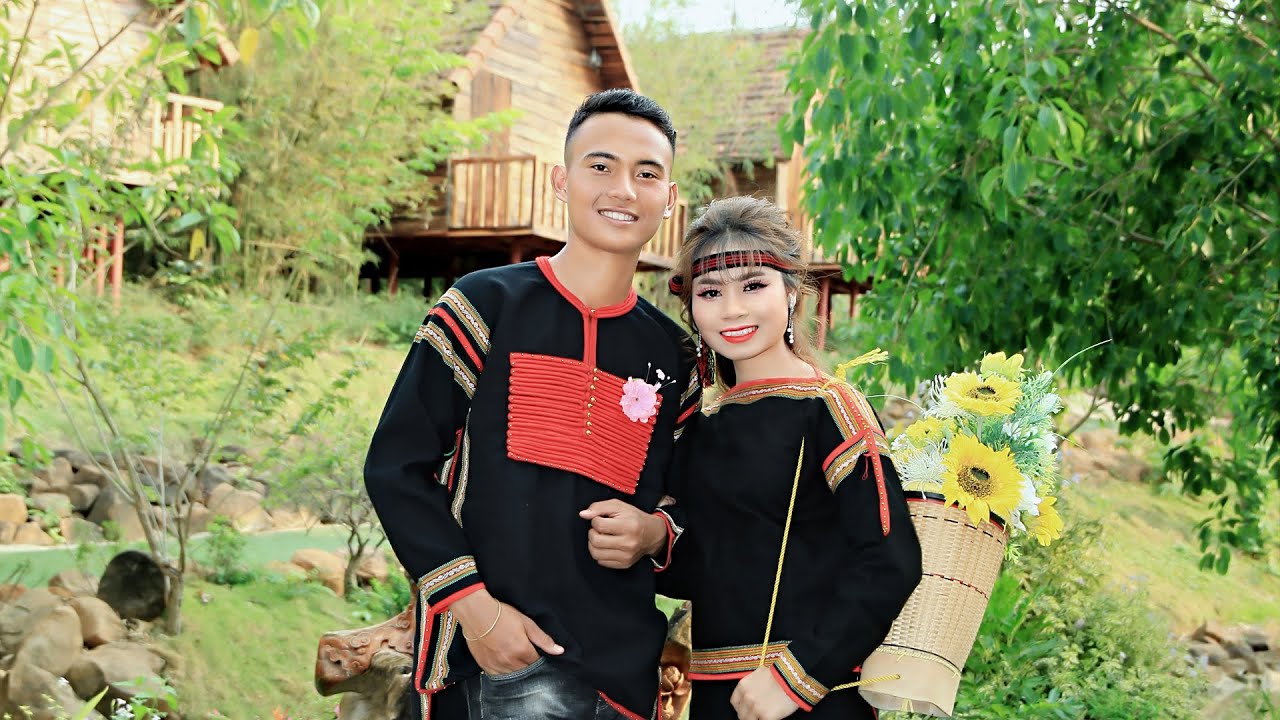
Photo: Internet
Typically, the traditional attire of the Ede people features indigo fabric adorned with colorful patterns. While women wear dresses and skirts, Ede men opt for shirts and loincloths. To enhance their outfits, Ede individuals also accessorize with jewelry made from silver, bronze, and large beads, adding to their overall appeal.
6. Traditional costumes of H’Mong ethnic group
The H’mong hill tribe makes up about 1.2% of Vietnam's population, ranking eighth among the largest minority ethnic groups in the country. They inhabit the northern and western mountainous regions, including Ha Giang, Lao Cai, Lai Chau, and Son La. The H’mong are divided into subgroups, identified by the color of their dresses: Black, White, Blue, Red, and Flower H’mong.
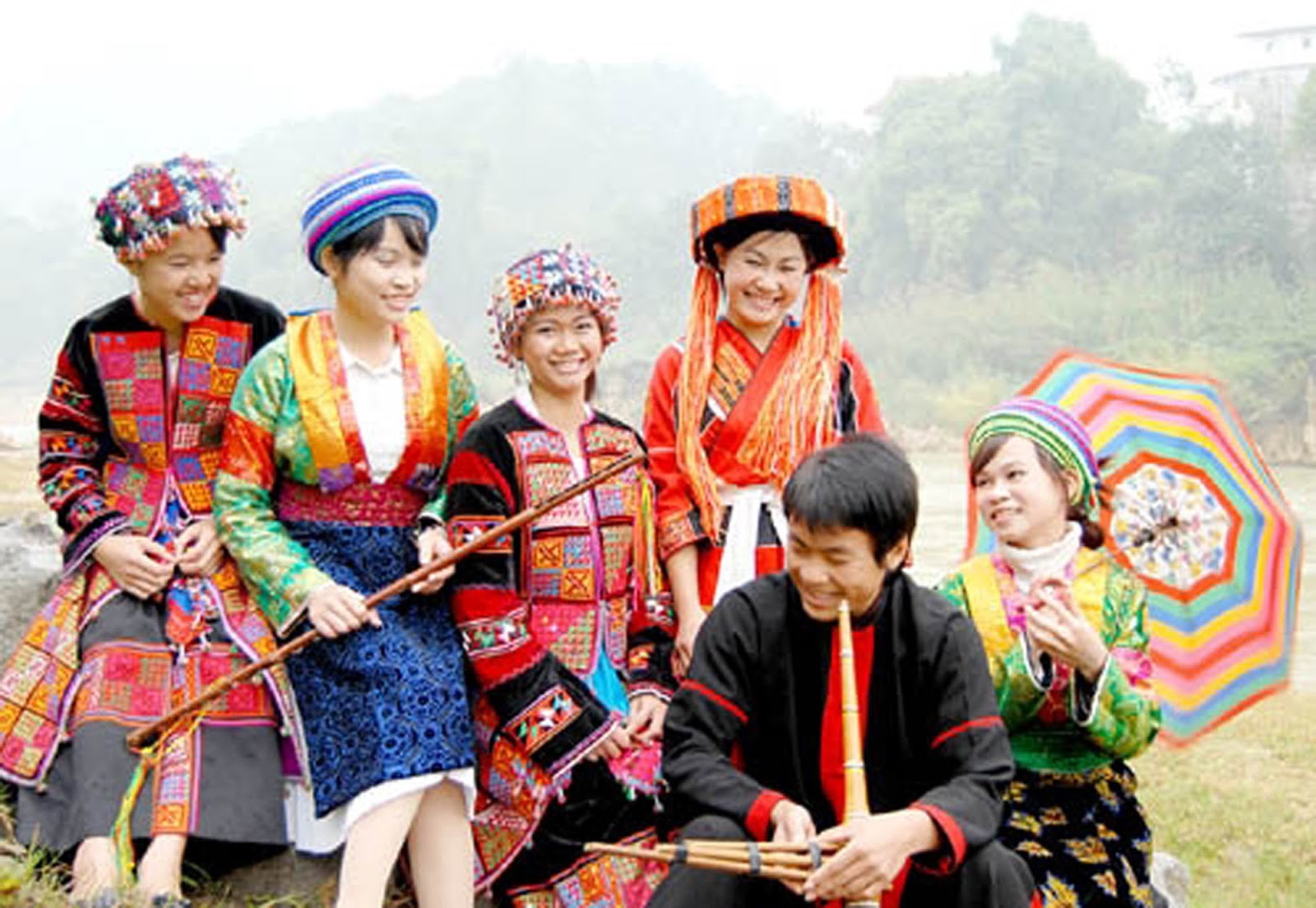
Photo: Internet
Traditional costumes for H’mong women are intricate and vibrant, usually crafted from linen and adorned with striking colors and embroidered motifs.
7. Traditional costumes of Thai ethnic group
While exploring Vietnam’s northwestern region—Lai Chau, Dien Bien, Son La, and Hoa Binh—you’ll have the opportunity to interact with the Thai ethnic group. You’ll likely be captivated by Thai women in their traditional attire, featuring a fitted blouse paired with a long black skirt.
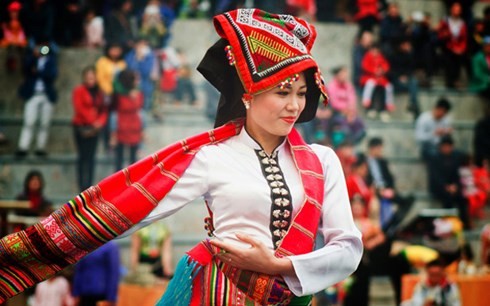
Photo: Internet
The ensemble is accentuated by a cloth belt in blue, green, or pink, with the green beautifully complementing the white blouse and black skirt.
8. Traditional costumes of Cham ethnic group
The Cham people, who have resided along the central coast of Vietnam for centuries, boast a rich culture heavily influenced by Indian traditions. Although their costumes may not be as colorful as others in Vietnam, they possess a unique charm.
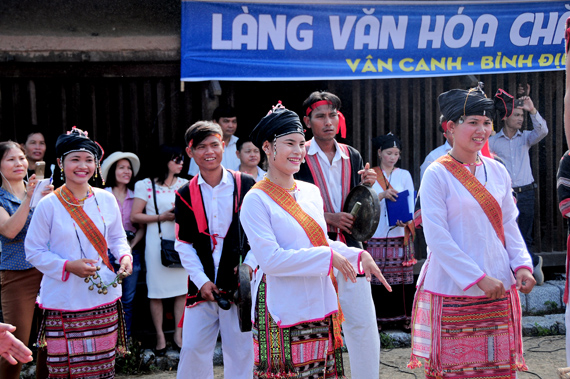
Photo: Internet
Both men and women wear long, one-piece sarongs or cloth wrappers. Men typically sport shirts fastened down the center with buttons, while women wear long-sleeved pullover blouses. A distinctive feature of their attire is the waistband, which is tied across the chest and around the waist, often designed with intricate details and shimmering golden iridescent shades, making it a standout element of Vietnamese traditional costumes clothing.
In conclusion, Vietnamese traditional costumes are a vibrant tapestry that reflects the country’s rich cultural heritage and diversity. Each garment tells a unique story, embodying the spirit and history of its people. From the elegant Ao Dai to the intricate attire of the H’mong and Cham, these costumes not only serve as symbols of identity but also connect generations through shared traditions.
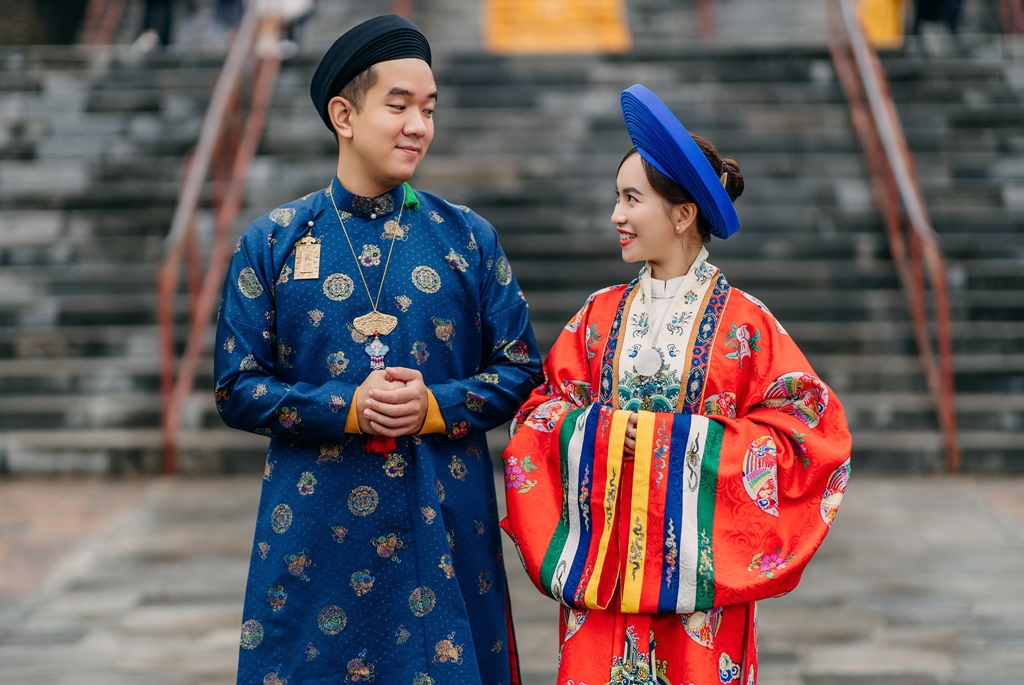
Photo: Internet
As you explore Vietnam with Vietnam Travel Group, embracing these cultural expressions provides a deeper understanding of the Vietnamese traditional costumes as well as its values and artistry. Celebrating these traditional garments allows us to appreciate the intricate craftsmanship and the narratives they represent, ensuring that the essence of Vietnamese culture continues to thrive for years to come.